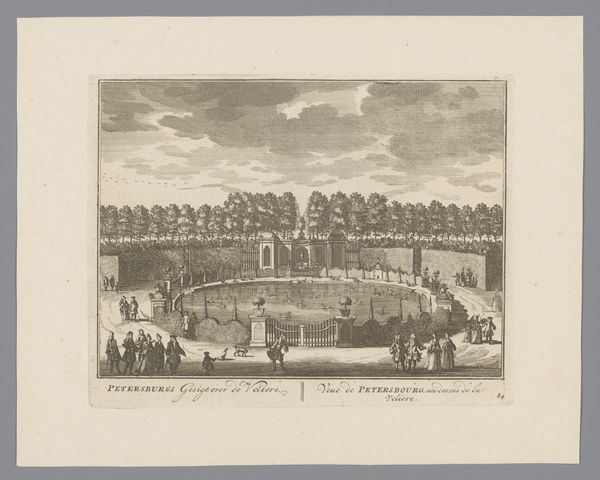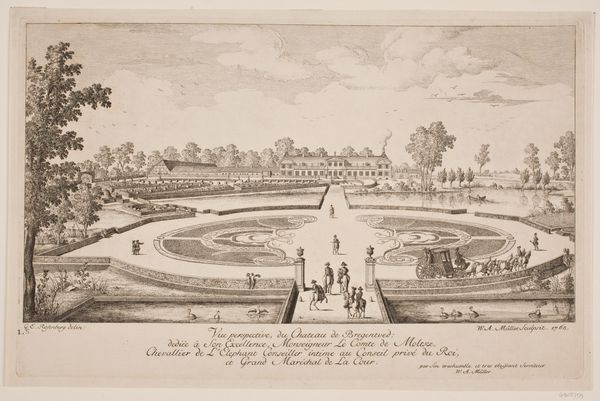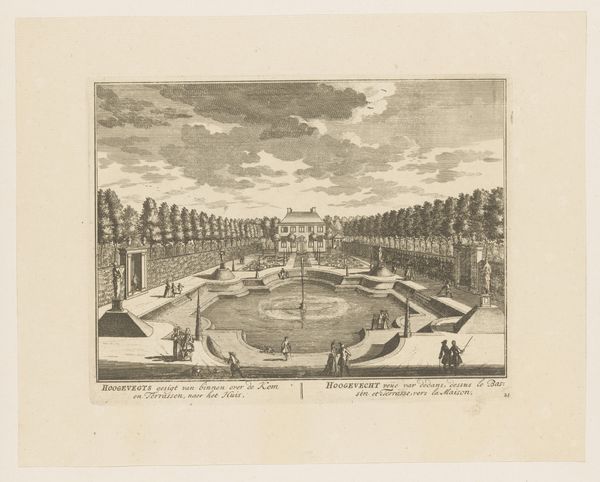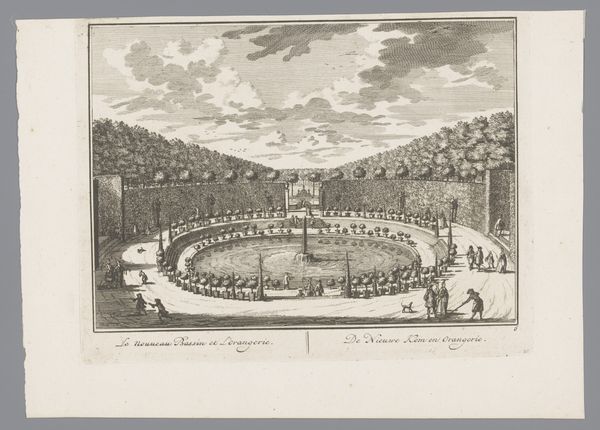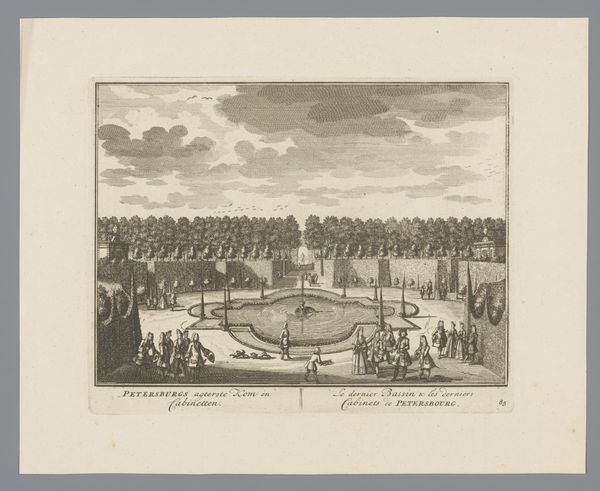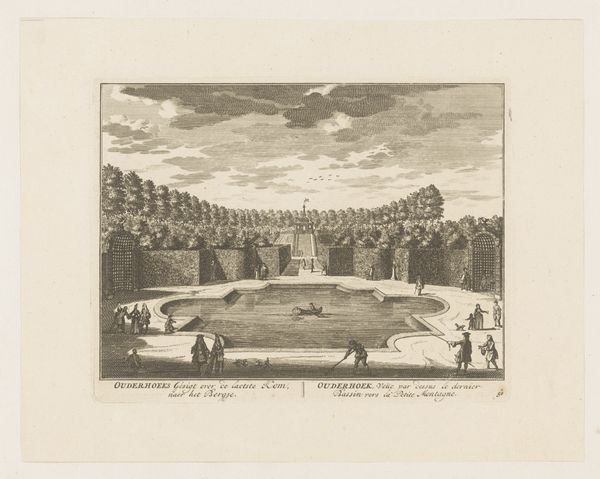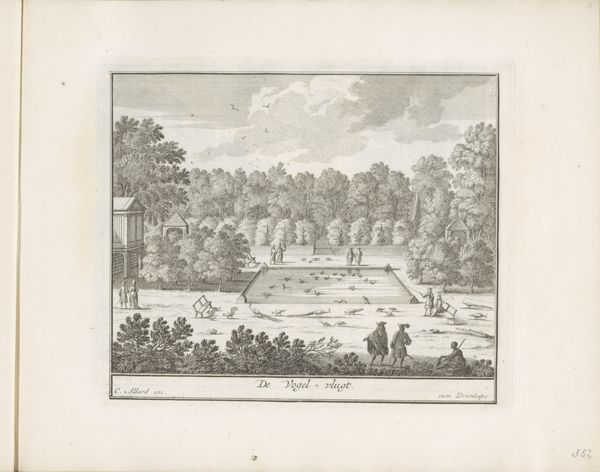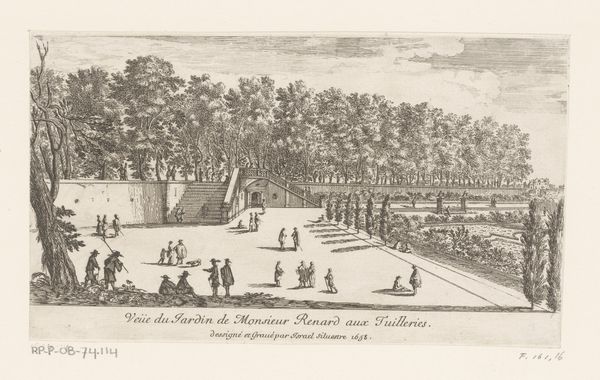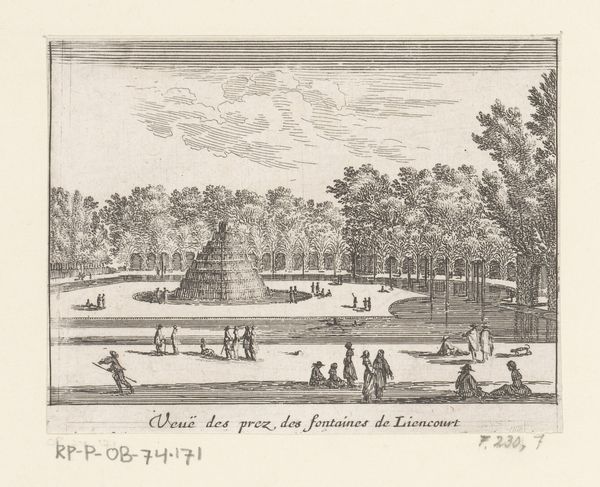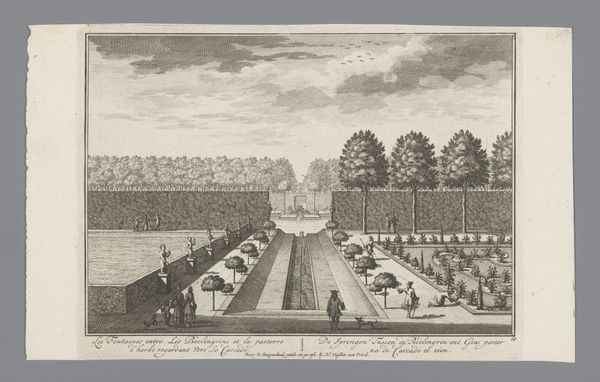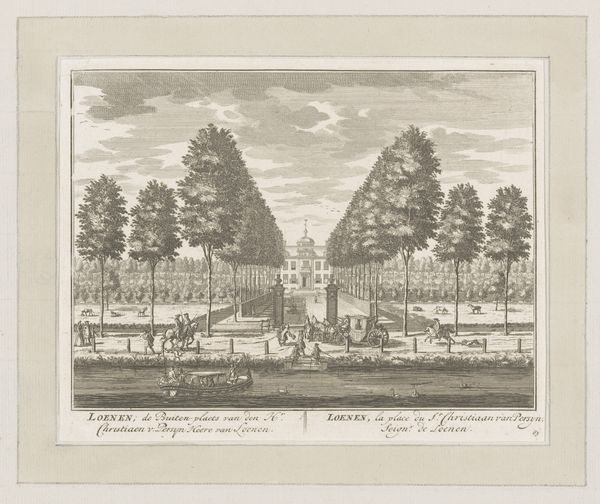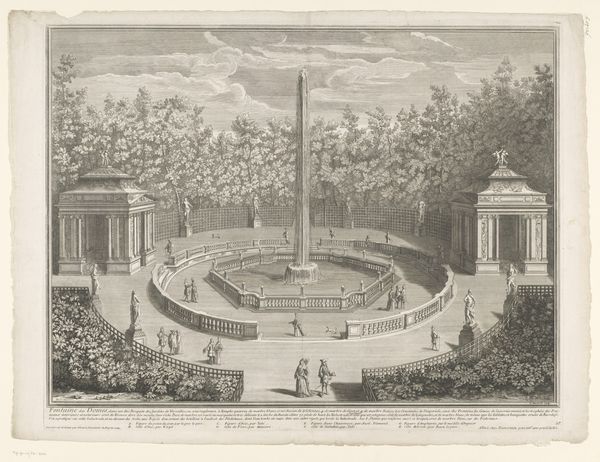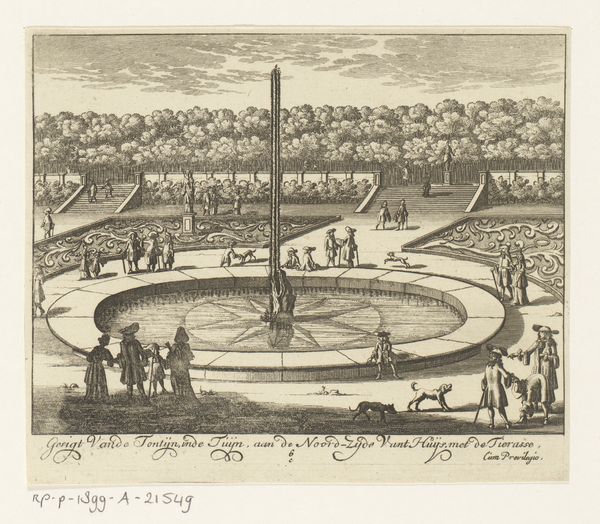
Gezicht op een vijver met fontain in de tuinen van Slot Zeist 1682 - 1726
0:00
0:00
danielstopendaal
Rijksmuseum
print, engraving
#
baroque
#
dutch-golden-age
# print
#
old engraving style
#
landscape
#
engraving
Dimensions: height 158 mm, width 212 mm
Copyright: Rijks Museum: Open Domain
Curator: This is "View of a Pond with Fountain in the Gardens of Slot Zeist," an engraving made sometime between 1682 and 1726, attributed to Daniël Stopendaal. Editor: My first impression is of meticulous order, but in an entirely constructed way. Everything seems carefully placed and regulated. The materials—the lines of the engraving itself—give the scene a very deliberate quality. Curator: Exactly! The social context is key here. Gardens like this weren’t just for aesthetic pleasure; they were displays of power and wealth. Note the contrast between the leisured figures strolling in the lower left and the labor of maintaining it all performed by a worker in the lower right, pushing a wheelbarrow, perhaps bringing soil or fertilizer. Editor: And there’s a very clear process in making it – we are talking about landscaping! It needs tools, people with a know-how, not to mention a financial capital. What I find most interesting is the labor behind such artificiality. Consider also the material differences: stone, water, meticulously shaped foliage. It’s all a manipulation of nature, made manifest in its physical construction, from planning to realization, of the engraver rendering of such display in printed matter. Curator: The fountain at the center certainly acts as the main focal point but this is just a tiny aspect of the image. I think that you're right in pointing the means of productions that enable all this display: these manicured landscapes reinforced societal hierarchies. It raises questions about who had access to this idealized version of nature, and who was excluded. Gender and social standing definitely played a part. Editor: Yes, and Stopendaal's engraving is part of that circuit too. Creating reproducible images makes them more available but it doesn't dissolve the class hierarchies behind it all. The Baroque style and this Dutch Golden Age approach further underscore these values through the engraver’s technical skills and the sheer investment in material execution. Curator: Absolutely, understanding this pond not just as a pretty scene, but as a statement of societal values, helps us to reflect on our own present context as well as how our understanding and appreciation of nature might intersect with identity, gender and economic class. Editor: It is through examining process and social role that we uncover this dialogue – a garden's form is a complex reflection of how we engage with materials.
Comments
No comments
Be the first to comment and join the conversation on the ultimate creative platform.
